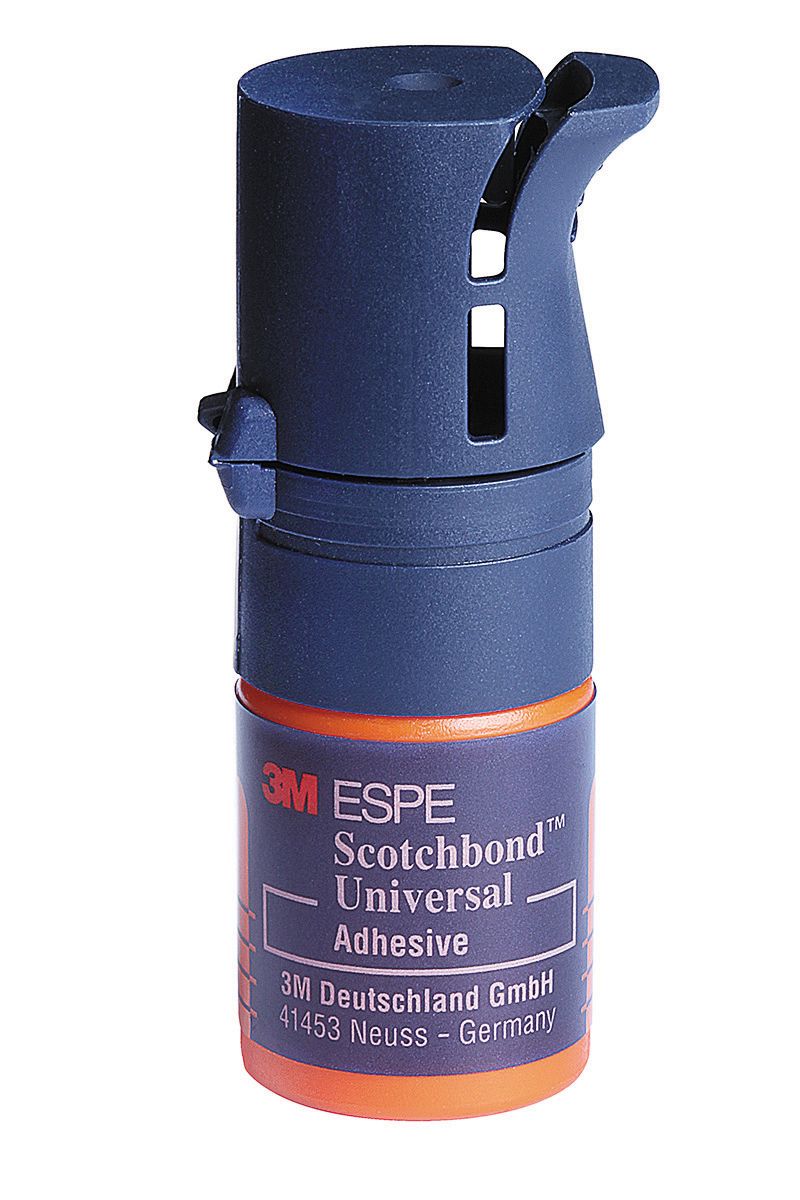How to achieve clinical confidence with universal adhesives
Mastering direct composite restorations.
Throughout a workday, dentists see patients for many different treatments, from simple hygiene appointments to more complicated restorative procedures. One of the most common procedures is a direct composite restoration.

The ultimate goal in a direct composite restoration is to provide the patient with a pain-free and esthetically pleasing result. Although this procedure is common and often relatively simple, the patient may feel discomfort if the correct products are not used together.
One problem often associated with direct composite restorations is post-operative sensitivity. Several factors can cause this sensitivity, including the etching mode and amount of residual moisture in the tooth when applying an adhesive.
In the past, the chosen etching mode often relied on the brand of adhesive, with some requiring one specific etching mode. Now, dentists can choose between self-, selective- or total-etch techniques, all from the same “universal” adhesive. One such universal adhesive, 3M™ ESPE™ Scotchbond™ Universal Adhesive, gives dentists the ability to use several different etching modes. With Scotchbond, dentists don’t need to be concerned with post-operative sensitivity because of the unique chemical makeup of the product.
Another advantage of a universal adhesive is that dentists don’t need to worry as much about the residual moisture left in the dentin after rinsing off the etchant, thanks to the adhesive’s high moisture or dehydration tolerance. Dentists are given a larger window to place the adhesive and no longer need to risk overdrying of the restoration, which can contribute to post-operative sensitivity.
The following case demonstrates how using a universal adhesive in a direct restorative procedure provides the efficiency to complete the procedure in less than 30 minutes.
Case presentation
A 35-year-old male presented with pain in tooth No. 20 and was diagnosed with recurrent decay beneath an existing conservative occlusal composite restoration. A direct composite restoration was chosen due to the size and location of the decay.
Check out the following video to see how the case was handled:
Step-by-step treatment
1) The existing decay on tooth No. 20 is removed. A Garrison FenderWedge® protects surrounding soft tissue and enamel from the high-speed drill.
2) The restoration is etched in total-etch mode using Scotchbond™ Universal Etchant. A total-etch mode is selected due to a majority of the restoration being in the enamel portion of the tooth and to ensure high bond strength with the existing enamel. The etchant sits for 15 seconds and is rinsed off, leaving the restoration slightly moist.
3) Scotchbond™ Universal Adhesive is applied to the restoration and scrubbed for 20 seconds. The adhesive is dried using oil- and moisture-free air for five seconds and light cured using the 3M™ ESPE™ Elipar S10 LED Curing Light for 10 seconds.
4) A thin layer of flowable liner, 3M™ ESPE™ Filtek™ Supreme Ultra Flowable Restorative in shade A1B, is placed to decrease the likelihood of voids when additional composite is layered and is light cured for 10 seconds.
5) The restoration is filled using a two-stage incremental technique, with a dual-shade technique chosen to offer a higher level of esthetics. To recreate the dentin layer, 3M™ ESPE™ Filtek™ Supreme Ultra Universal Restorative in shade A1B is first applied. The composite material is placed in a vertical incremental layering technique to combat polymerization shrinkage and shaped using a Hu-Friedy® Mini 4 Composite Instrument.
6) The composite material is light cured for 10 seconds.
7) A second layer of restorative is placed using Filtek Supreme Ultra in shade A2E, chosen to mimic the esthetic of the existing enamel and to provide a more seamless integration. The restorative is shaped and then light cured for 10 seconds.
7) Using a finishing bur, the restoration is adjusted for proper occlusion.
8) To complete the restoration, 3M™ ESPE™ Sof-Lex™ Spiral Finishing and Polishing Wheels are used to provide a natural luster and shine to the restoration.
Conclusion
When completing a direct composite restoration, it’s important to use materials that provide the longest-lasting and most comfortable results. Two years of personal clinical experience using a universal adhesive have resulted in zero adhesive-related post-operative sensitivity complaints. Universal adhesives give dentists the flexibility to choose their preferred etch mode, while providing confidence that the likelihood of post-operative sensitivity is greatly diminished.
About the author
Dr. Jeff Blank graduated from the Medical University of South Carolina College of Dental Medicine in 1989 and maintains a full-time private practice in Fort Mill, S.C., where he emphasizes complex restorative reconstruction and cosmetic enhancement procedures. He holds an adjunct instructor post in the Department of General Dentistry at the Medical University of South Carolina College of Dental Medicine and has authored dozens of clinical manuscripts on a variety of clinical techniques and materials. He is a fellow in the Academy of Comprehensive Esthetics and the International Academy of Dental Facial Esthetics and an active member of the International Association for Dental Research, the Academy of Operative Dentistry, the American Academy of Cosmetic Dentistry, the Pierre Fauchard Academy, the American Dental Association and the Academy of General Dentistry.

ACTIVA BioACTIVE Bulk Flow Marks Pulpdent’s First Major Product Release in 4 Years
December 12th 2024Next-generation bulk-fill dental restorative raises the standard of care for bulk-fill procedures by providing natural remineralization support, while also overcoming current bulk-fill limitations.